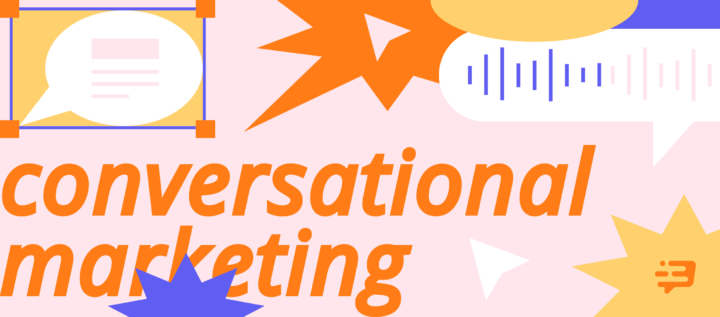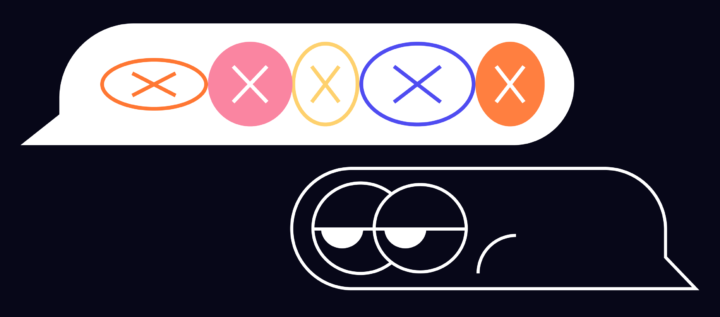Building the Revenue team: align your Marketing, Sales, and Support to focus on communication with customers

Businesses collect data about customers promising to improve their experience within a product. But is it really the case?
Remember the situation when a support team doesn’t know what “special offer” a customer is asking about. Even though the offer was in an email sent by the very same company to this customer 10 minutes ago. Or think about salespeople calling prospects without any idea what exactly their leads are looking for. Most of the time, marketing, support and sales teams have a great data about their customer. But they don’t share it with one another. Among other things, this can cause friction when the user needs to provide the same information over and over again.
In Dashly we treat marketing, sales and support teams as one. We call it the Revenue team. In fact, it’s a customer-centric team that communicates with users at any step of their journey, guiding and converting them into sales (and repeated sales).
Let’s have a look on how to align all your teams with one platform and make customer experience smoother.
The way we communicate has changed
How do you usually chat with your friend? You do it via social networks or messengers because it’s fast, convenient and very personal.
Now remember the last time you communicated with a company. You either spend time on a line or try not to fall asleep on their website waiting for an answer in a live chat. Emails and calls are usually pretty long and boring. But customers still need to use them to reach the businesses.
We believe that communication should be more personal. It should be easier and fun, like talking to a friend. Thus, Dashly decided to change the way businesses communicate with users. And we started with our own company.
In the Dashly Revenue team, everyone can continue talking to a customer to make sure the communication is smooth and the customer is satisfied. We don’t build marketing funnels or sales pipelines: sales, marketing and support are equally important throughout the customer’s lifecycle.
A challenge to meet higher standards
It might seem that those companies that have poor communication channels are evil and want us to suffer. But it’s not the case. Marketing, support, and sales managers are struggling to find ways to be closer to their customers. But the tools they use don’t meet today’s requirements.
It’s hard to provide a decent level of support in messengers. You need to switch between apps or tabs to find all the conversations with limited or no information about the user. So managers ask people they’re talking to for details. This makes conversations longer. It’s quite a challenge to control and measure the quality of support when companies start using messengers and social networks.
This is where we introduce Dashly. Conversational platform integrated with messengers.
To be sure you have all the conversations with your customers in one place, we have an inbox. Thanks to various integrations, the inbox collects messages from Facebook, Instagram, Viber, WhatsApp, Telegram, email and live chat. This way you’re on top of all your incoming messages.
There are great collaboration tools in the inbox that every sales, marketing and support manager can use. To name a few, they can:
- assign and reassign conversations,
- hold the ones to find the details,
- make notes for their teammates,
- attach articles from the help center right to the chat and much more.
Conversations are not only about support
Now when we have all the messages and information in the inbox, the Revenue team comes into play. This means that marketing, sales and support teams look at conversations in a broader way. Promotion newsletters, in-app messages, sales calls and follow ups — all these are conversations with users.
This is about building a whole system, not about collecting a bunch of disconnected messages. Only then everything and everyone will work in synergy. And this is how your revenue will grow.
A lead card in Dashly is a single source of truth about all communications with your customers. You can see campaigns they’ve received, actions they’ve taken, and questions they’ve asked the support team via social networks or live chat. Thus, you can tailor your next interaction according to their needs and interests. Which of course leads to more sales.
To zoom out, you can do the same with segments of users, not individuals. Segment your lead database. Find those who’ve received a newsletter, visited the landing page, but haven’t either bought or talked to a salesperson. You can send them a survey to find out what they didn’t like or the next letter to focus on the advantages they’re missing.
When you look at communications as a system with interconnections, you can rely on the data you have.
More conversations — more sales
According to Dashly research, 30% of site visitors who have communications with the Revenue team buy. Whereas only 4% of those who don’t interact with the team make a purchase. It proves that communications are equally important for marketing and sales teams.
It’s easy to explain. Conversations help us build trust and provide information people need. That’s all what people want when they visit a website — to solve their problems with ease and in the quickest way possible. You help them, so it’s worth paying for.
So to boost conversion rate, we engage with as many site visitors as possible. You certainly can write to every single site visitor or use automation (pop-ups and chatbots). We have tens of cases that prove the efficiency of such communications.
It doesn’t mean you have to send spam — segmentation based on user data helps you send much more accurate offers.
The more conversations — the bigger the team?
You may think that the more conversations we have, the bigger our team should be. Because somebody has to give answers. In fact, it’s not so.
We want to interact with as many people as possible without increasing the workload. How is it possible?
Automation!
In Dashly we think about conversations in a broader way. So we use chatbots to answer the most common questions. You set it once and then it helps you. Moreover, chatbot can qualify leads and send VIP customers directly to managers.
To speed up the support team, you can also use Dashly knowledge base. As it’s integrated with the inbox, your operators can send a link in two clicks and save time for more complicated questions.
Work smarter not harder
The world is changing fast. The data we collect about users grows even faster. Our grandparents could know every customer’s name, but now you can’t provide a good service without specific tools.
Thanks to modern technologies, you can provide personalized support and offers to tens, hundreds or even thousands of users. Apply the data you have, share it within your Revenue team with one platform and create the greatest user experience.




![Sales and Marketing Automation: How to align their workflow to 2x revenue [Dashly example]](https://www.dashly.io/blog/wp-content/uploads/2021/06/IMG_1074-1100x471-1-720x308.jpg)

